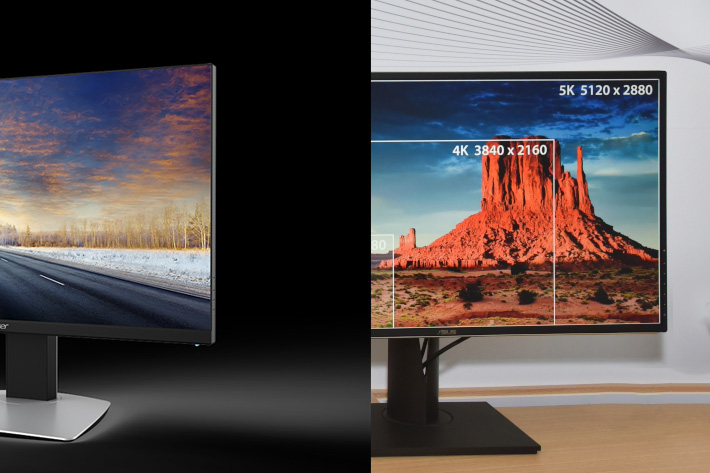
Showcased at Computex 2016, the largest IT tradeshow in Asia, the new Acer BM320 4K UHD monitor is a 32 inch screen designed for graphics and video professionals. Asus also has a 32 inch, the ASUS ProArt 5K UHD, along with a ROG XG Station 2, able to transform a laptop into a VR-gaming powerhouse, says the company.
The BM320, from Acer, offers 4K UHD resolution (3840 x 2160) on a 32-inch panel which offers, according to Acer, “images with professional-grade color accuracy and amazing detail”. The information provided indicates that “photographers and graphic designers will appreciate its support for 100% of the Adobe RGB color gamut, while video editors and directors can work with confidence as it covers 100% of the Rec. 709 color gamut and 90% of DCI-P3.”
The BM320 supports 10-bit color depth, which provides 64 times more color depth over conventional 8-bit monitors, and every unit is factory pre-tuned and tested to ensure a Delta E<2 color accuracy. It comes with Uniformity Compensation to help reduce uneven brightness and color fluctuations across the screen, adds Acer.
The BM320 features a sleek ZeroFrame design which virtually eliminates the screen’s bezel for a seamless visual experience when multiple displays are put together. In addition, Acer’s ErgoStand lets users tilt, swivel, pivot or adjust the height of the monitor with ease, ensuring that they find the perfect viewing position effortlessly.
No indication from Acer, yet, of price of availability.
Asus had multiple new products on show at Computex 2016, including ASUS Transformer 3, an ultra-slim and compact 2-in-1 PC, which has a 12.6-inch display with a resolution of 2880 by 1920, so it makes complete sense that their 32-inch ASUS ProArt 5K UHD provides 5120 x 2880 resolution images through a single DisplayPort connection.
Designed for graphics professionals, the ASUS ProArt 5K UHD has a wide color gamut with 100% Rec. 709, 99.5% Adobe RGB and 95% DCI-P3 color-space support. The company also showed the ASUS ProArt PA27AQ monitor, featuring a 2560 x 1440 WQHD panel with a 100% sRGB gamut. With a frameless design on all four sides, it is ideal for multi-display setups, according to Asus. Asus has not yet indicated price for their new ProArt monitors.
Both ProArt monitors feature the exclusive ASUS ProArt Calibration Technology, which includes color accuracy tuning and uniformity compensation for easy monitor calibration. It offers overall data mapping, correlation and calibration, and saves all color parameter profiles on the display’s internal scaler IC chip instead of the PC, so users do not have to recalibrate settings whenever the display is hooked up to different computers.
Asus also showcased their ROG XG Station 2, an external graphics-card dock that turns a laptop into VR-gaming powerhouse. A 680W power supply is designed inside and supports the latest NVIDIA GeForce GTX and AMD Radeon graphics cards. ROG XG Station 2 is equipped with Thunderbolt 3 and an exclusive proprietary connector that improves performance up to a further 15%. Asus adds that “it’s easy to connect and can be unplugged without restarting the laptop — and includes four USB 3.0 ports and a gigabit LAN socket for extended connectivity and convenience.”
The ROG XG Station 2 continues the idea of the Station 1, from 2007, but follows the recent trend for these external devices. With a price of $300 for the case – you’ve to buy the graphics cards to place inside, the ROG XG Station 2 enters a market where these enclosures are the new trend for 2016.
Although the ROG XG Station 2 appears as a solution for gaming, its use extends far beyond, and that explains why it is a solution being used by more manufacturers, and not just to allow laptops to transform into machines able to run Virtual Reality applications; now that consoles seem to be left behind when it comes to Virtual Reality and other recent applications, the PC enters a new era of customization, both for work and play, where the external graphics enclosure using Thunderbolt 3 (USB-C) plug and play connections is just one of the new elements of a revolution started early 2016.
